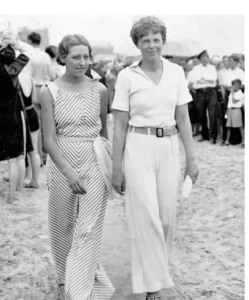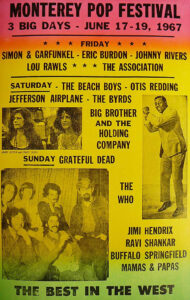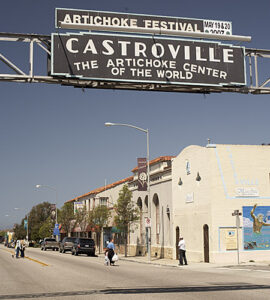
I remember when the Victorian Labor Party made Labor unelectable at a Federal level, because in the Split in the early 1950s it had spawned the Democratic Labor Party, the Bob Santamaria neo-Falangist spin off. This laic outpost of Roman Catholicism, masquerading as an anti-Communist movement was very much a simulacrum of Franco and his Falangist Party but with an Irish twist. After all, De Valera then the Taoiseach of Republic of Ireland expressed condolence on the death of “the Fuehrer and Chancellor of the German Reich” to the German ambassador, Herr Eduard Hempelt.
The then Roman Catholic Archbishop of Melbourne, Daniel Mannix, was very much cut of the same cloth as De Valera. Santamaria and Mannix played interference against the Victorian Labor party over several decades. I grew up in a very anti-Santa household; but I never worked out where my father cast his first preference. However, I was pleased to be part of the 1974 Federal election, which effectively destroyed the DLP in Federal Parliament. This has never been recorded as one of Billy Snedden’s achievements.
Given Whitlam, in one of his impetuous moods, had precipitated the 1974 election with the appointment of Vince Gair, the DLP Queensland Senator, to the Australian Ambassadorship to Ireland, the DLP influence did persist. For instance the DLP was, for years afterwards, influential in the Victorian public service and in some of the health funds, among conservative sections of the medical workforce.
Nevertheless, like wisteria the DLP proved difficult to totally exterminate. Brian Harradine, expelled from the Tasmanian Labor Party, became a serial pest as Tasmanian Senator. As recorded in Wikipedia, he opposed abortion, embryonic stem cell research, same-sex marriage, and pornography. He secured a ministerial veto on importation of the abortifacient RU486 and a prohibition on Australian overseas aid financing family planning that included abortion advice. I was an observer when he blocked John Funder’s appointment to head the National Health & Medical Council because of Funder’s liberal views as a practising Roman Catholic.
After Harradine’s passing it could be said the DLP mantle was passed on to Tony Abbot, who was found out in the top job and then rejected by the electorate, a significant reaction. Notwithstanding its religious association, the DLP has persisted longer than most other parties.
In the post electoral defeat discussions, the fixation more on young people and gender balance as the cause for the Liberal Party’s defeat hides the problem of attracting people of ability. This dearth of ability is compounded when there is a claque of people who had been egged on by a nonagenarian New York dweller.
It is notable that in the wash up of the Victorian Election, the National Party has increased its representation, admittedly from a low base. Of those elected to the Legislative Assembly in 2022, four are women.
But governments are won in the metropolitan areas.
Guy Rundle, writing in Crikey has not minced his words: “When the party was a collection of social castes, a mutual legitimacy was recognised. That’s in Menzies’ “Forgotten People” speech, if Liberals bothered to read it rather than just namecheck it. Menzies is not stirring up the “forgotten people” to represent themselves — God forbid — but offering that his upper social class will represent them. The whole act of naming someone as “forgotten” is an act of othering. People don’t forget themselves. Someone forgets them. And offers to remember them.
That’s the place the Credlins, Krogers, etc, are all trapped in, private school graduates all. They simply assume that the “forgotten” will consent to be represented by a class whose fortunes, manners and basic comportment in life they do not share. But the secular social frameworks that once created a Liberal world — progress associations, church congregations — are gone, and in their place are churches called things like Rock Breakers or Awesome Love Ministry or whatever.
A former Premier, Ted Baillieu, a scion of that Menzies’ upper social class, the day after the election was blunt “We need young people, we need change. We’ve got upper house members who could resign this week and be replaced. We had people representing us on the television last night who are all of the past. I’m of the past. Get rid of us!”
The reminder of those times is Jeffrey Kennett who, as Liberal Premier, turned incivility into an art form while bouncing around the mental health of the community. The problem with Kennett is that he is very much of the “macho past”, and most people are sick of his rudeness and lack of sensitivity. “Get rid of us” could not aptly apply to anyone but him.
Then there is that description of the Young Liberals from years ago by Patrick Morgan, who defined them as “ninety-five per cent misfits led by five per cent of lawyers”. The difference is that they are no longer young.
Having identified the unelectable, then it is a question of what to do beyond a purge.
I had just become involved when, for a short period, the Liberal party showed an interest in policy, and there was a push backed by some of the most prominent business leaders at the time to set up a policy unit. It was a fortunate time when Whitlam came to power for such an initiative. Ideas were bubbling over everywhere. It was a very proactive period, and the advisers on both sides were men and a few women in their thirties, more interested in policy development than just playing games of “gotcha.” Thus, the students of a decade earlier were a prominent component in this policy surge.
I came from that generation of the politically active at university where the various student unions around the nation were at the centre of policy activity, and while there were clubs with affiliations to political parties, they had no direct influence in running student union elections. The medical students voted me in, not my political affiliation.
What happened was that the various faculties produced students with political aspirations; and the views reflected their socialisation through their disciplines – I, the President, was a medical student; the Vice President, law; the Secretary, architecture; the Treasurer, engineering; and the member of the executive responsible for club and societies a social studies student. She was the sole female. Decisions were not influenced by ideology or grifting. I suppose we just wanted to do what was best for our constituency.
As I found out, in the real life of politics if you want to challenge the duopoly of Capital and Labour which fits so neatly into the adversarial nature of our political setup, you need infrastructure and money – and singlemindedness. In other words, the greatest difficulty to establish a third force is to convince sufficient people to provide the party infrastructure or, more importantly, the associated funding – and not to give up.
Splinter parties on the right have a guaranteed stream from the far reaches of capitalist freebooters; splinter parties in the far left do not. Where the Greens fit is interesting. I believe they have a shifting base now that climate change is being taken seriously, and they have lost their anarchic and syndicalist core. Thus, on the political spectrum it is hard to place them – one moment beads and sandals; the next, serious climate change warriors. Nevertheless, they represent an important political force that could be better harnessed.
Generally, donor whim determines the eventual fate of small parties, and the level of commitment can be titrated against hatred of the political establishment, dependent on individual interests which eventually wane or die – or are absorbed by one or other of the two major Parties.
The major complicating factor has been the entry into politics of groups professing to be religious. The Roman Catholic Church has been a dab hand at it – after all, the Bishop of Rome had a temporal role in ruling the Papal States over many centuries.
The religious groups thrive because for one they are untaxed, and in moving into politics they are being indirectly subsidised by the taxpayers. It was something Santamaria realised decades before when taking part in the intra-party brawl to gain control of the Labor Party.
Santamaria may have shown the way for interweaving religion into temporal power, as the current infiltration into the ossified Liberal party branch system by the so-called “religious right” has done. The rise of the Pentecostals and all their fellow glossolalia mates as a political force attest to this. Policy is not high on the Pentecostal agenda; it is there pre-ordained in Scripture; the way they interpret the Bible. We, the taxpayers subsidise them, whether we like it or not.
From the Liberal Party’s point of view there has been the emergence of a number of successful women whose concerns mimic much of what should be a liberal social agenda which, to me, was a no brainer. After all, Keating as Federal Treasurer adopted most of the neoliberal economic agenda, but Australia is now in the grip of cartels and government corruption which defeats the free market concept every time. Nevertheless, most of these so-called Teals would be economically conservative.
What is left is the unalloyed hatred of those who oppose you, the centrist, the very forms of power madness. Andrews is far from centrist (to me his level of hatreds do mimic those of Keating) and is accused of being dictatorial, but by whom? Among his opposition, there are others who appear equally power mad, but unlike Andrews, they also appear mentally unhinged. That is the problem of the Liberal Party. They have megaphones, which spew out the same unbelievable propaganda, and in so doing tip this megaphony into figures of ridicule. The characters have got nothing else; their notoriety is so self-addictive.
Once you challenge this thesis, then eventually it will crumble. You just must have the staying power, and my view is that by broadening your appeal you move to that mythical centre of politics at the same time realising that this centre is like the magnetic pole, it moves around.
Being centrist means being attacked from both sides, and therefore it is useful to have supporters with money and influence gained from a competent, intelligent, honest pool – and not prone to drinking too much or/and boorish behaviour.
Inevitably Andrews will stumble over his own hubris, his “castles in the sky” will prove unattainable, the thinness of talent in long term government will become palpable as the sycophantic rise to the top in those in swaddling clothes of ministerial privilege. However, in the next few years his Opposition must be Credible not Credlin. And remember getting rid of wisteria means constant pruning once you deem it a weed and not just a seductive drooping bloom.
I tried nearly 50 years ago. I admitted failure when I moved out of Melbourne at the end of 1979 and moreover failed to get pre-selection. If I had my time again, I believe I know what to adjust in the Victorian Liberal Party, and I am not one to believe that History is bunk.
Amelia and Amy
Even flying feels all too 20th century, though millions of us take to the air as casually as we board a bus or train. We wait in nondescript boarding lounges, walk down metal tunnels and lever ourselves into the narrow seats of a small cinema, where we watch Hollywood films on a low-definition screen while unsmiling staff push trays on to our laps bearing an assortment of inedible foods that we are not expected to eat.
Before take-off the cabin crew perform a strange folkloric rite that involves synchronised arm movements and warnings of fire and our possible immersion in water, all presumably part of an appeasement ritual whose origins lie back in the pre-history of the propeller age. The ceremony, like the transubstantiation of the host, has no meaning for us but is kept alive by the airlines to foster a sense of tradition.
After a few hours we leave the cinema and make our way through another steel tunnel into an identical airport in the suburb of a more or less identical city. We may have flown thousands of miles but none of us has seen the outside of the aircraft, and could not even say it if had two, three or four engines. All this is called air travel.
What a beautifully encapsulated description, even though the folkloric is now increasingly presented as a travel log with the same repeated instructions woven on film rather than demonstrated by bored flight attendants in the repeated cabin safety cavort.
This was written in 2005 as part of a book review by J. G Ballard, the prolific writer, in The Guardian four years before he died. The book in question was “The Spectacle of Flight: Aviation and the Western imagination 1920-1950”. The thesis of this book was WWII took the magic out of aviation, converting it from an art form into an industry. Maybe so, and the book review was very well written, but not sufficiently enticing for me to buy this book, a two-part series by Robert Wohl, an American historian.
As good as the view was, this is not the reason I kept the cutting of this book review.

What focussed my attention was a photograph of two women determinedly striding towards the camera. The woman on the right in belted bell bottom trousers was Amelia Earhart. The woman on the left in a striped jumpsuit is Amy Johnson. Both of them were household names as women pilots whose exploits were part of the expansion of flight with all its inherent dangers. This photo was taken in 1933 at the height of their fame. Amy Johnson had flown to Australia solo in 1930; Amelia Earhart across the Atlantic solo two years later.
Amelia Earhart disappeared over the Pacific Ocean on 5 January 1939. Amy Johnson’s plane crashed into the Thames estuary on 5 January 1941, exactly two years later, possibly a victim of “friendly fire”. Neither body was ever recovered. Films were made of their respective lives – Amelia with Hilary Swank in the leading role as Earhart; Amy Johnson has been the subject of documentaries.
But sometimes the photo tells it all, it just radiates their respective presences.
Jotting from the Cathedral
I have written during my life a number of fragments – an immediate urge to pen an observation after seeing something that interested me; and then being distracted and moving on before writing anything more. Therefore, the description was often a couple of paragraphs. Yet if I had not jotted it down, I doubt whether I would have remembered any of the detail. Would it have mattered? Probably not.
Yet you can judge my jotting which begins, “September in San Francisco”. I had not written down the year, but it was probably 1982. For a time between the seventies and nineties I used to visit a friend who lived in Berkeley. She had a spare bed, and I periodically stayed there. In the wake of its notoriety San Francisco, and Berkeley in particular, presented a mixed picture. It was not just a refuge for flower people, it was a university town, but it was also a place where there was a strong industrial presence.

The sun had shone, but in the late afternoon, the wind had sprung up. The wedding party emerging from Grace Cathedral emerged at this time, the ceremony having started sometime in the afternoon. Grace Cathedral, the Episcopal Cathedral was spectacular because it was large and was close to Nob Hill, the salubrious part of San Francisco. I remembered this as the only time I went there. Earlier in the day I had gone to the Chapel of the Nativity and it was at the time the Eucharist service.
The deacon, intoning the names for whom prayers were being said, included two Terrys, one Kent, and several Peters. I could recognise only two women in the long list of names of men. Only Christian names; not like the Anzac Day services at School when only surnames were read out in alphabetical order of those who “had fallen” in the World Wars. Only when there were two with the same surname were initials added to the surnames being read out. The Snowball family lost more than one of their sons; it also signified that this recitation was nearing its end. The name has ever since stuck in my memory.
But now in San Francisco, we had clasped one another’s hands and stood around the altar while the priest, whose sermon was short, intense and delivered without interruption, handed out the white wafers and the deacon the wine. The wine was white and sweet. Then I went back to holding hands with a young man on one side and an older man on the other side until all the Sacrament had been dispensed and the benediction given.
Then, it was over. Some genuflected. My acknowledgement to God was a stiff nod of the head as I stepped backwards; and I realised that nobody had instructed me whether it was the right time to cross myself.
I wondered why I had written “delivered without interruption”, and why I had hung around the Cathedral. It was not something I normally did. In any event, I never went back to the Cathedral.
Here my fragment finished. September 1982 was the first time the term AIDS was used, rather than the “gay plague”.
Travelling South
I found another those unfinished operas on a piece of The Atlanta Colony Square Hotel writing paper. I had started to write about the previous couple of days in California. I had written this note in 1987, just after I had been to Monterey.
 I first saw “Monterey Pop” a decade earlier in 1968. “Monterey Pop” was the filmed recollection of that 1967 Pop Festival, where, among others, Janis Joplin and Jimi Hendricks burst into view. There was “Pearl” as Janis Joplin was known, belting out songs with that raw emotion. As I write, I still feel sorry about Pearl, even though she had been dead for 17 years.
I first saw “Monterey Pop” a decade earlier in 1968. “Monterey Pop” was the filmed recollection of that 1967 Pop Festival, where, among others, Janis Joplin and Jimi Hendricks burst into view. There was “Pearl” as Janis Joplin was known, belting out songs with that raw emotion. As I write, I still feel sorry about Pearl, even though she had been dead for 17 years.
I still had a grainy video of those magical three days. My generation, with its long hair, beads, quasi-Indian clobber (or none at all) with protestations of free love smiled at the camera and played and adored and had an experience which transcended all at the concert, while Vietnam played on. The acid in my pen was hardly concealed as a different form of acid was likewise at the Festival.
I visited Monterey 20 years later. I never went looking for the paddock where the Festival was held. As I wrote, Monterey itself had been fascinating. On this occasion, I wrote that we headed for Cannery Row. We had left early to beat the rush. It was a Saturday in April, and a clear beautiful day. Even so to clear Oakland travelling south it took time to drive through the industrial development which lined the Bay. We avoided many of the bridges and eventually reached the hills and the redwoods. Once we passed through these, we found we were driving through fields of artichokes, the globe fruit poking through the barbed leaves. After all, it is a relative of the thistle fields without fences. Castroville – it was peak artichoke season. I bought a T-shirt featuring a globe artichoke.
The last sentence of this excerpt was my comment that we were in strawberry country – the strawberries in the basket were the size…that was the end. The size of what? Here I ended – not even a definition of size. It is a pity because I was cataloguing a trip through the countryside, not then affected by drought. Few talked about climate change in the 1980s. California was then the limitless American Cornucopia.
I never reached writing about Monterey itself in this fragment, but Monterey has always been a favourite destination of mine. I had written about it previously. It had kept its heritage in the streetscape; it has paid tribute to being, if not the birthplace of marine biology, a significant contributor through the work of Ed Ricketts, a close friend of John Steinbeck. The Hewlett-Packard three-storied aquarium at the end of Cannery Row attests to the richness of the heritage stimulated by this relationship.
Cannery Row was lined by sardine factories, and when I was a regular visitor there in the eighties and nineties, they were closed because there was a ban on fishing. That ban was lifted for a short period in this century but was reimposed in 2015 and never again lifted.

The other reason to come to Monterey is the sea otters that are the vaudeville artists of the sea. However, the sea otters are the bellwether for the health of the environment of The Bay with its kelp forest and the crustacea which are so important in their sea diet.
There was a Monterey Pop Festival on the fiftieth anniversary in 2017. The goal of this celebration is to memorialize Monterey Pop’s importance, legacy and lasting impact on contemporary culture with live music performances, unique experiential activations, historic memorabilia and art installations. What pompous claptrap, but the Pop festival went ahead as a well-sanitised three-day tribute to the 1967 version – but a buttoned down, mannered version. Monterey has a regular jazz festival that exists in a cerebrally cultural outpost. Monterey 1967 was unique, even though Woodstock two years later may be better remembered, Monterey set the scene. Nothing will diminish its importance.
As for the fertile Monterey valley, what had happened to Castroville since that trip. Horror stories began emerging in the ‘90s. One grower in Castroville recognised that if the aquifers dipped below sea level, ocean water would continue to creep into their wells and eventually destroy them.
But extensive improvements to the local wastewater treatment plant have made highly treated effluent safe to use on crops. The saltwater intrusion slowed, and the crops recovered. Since using reclaimed water on crops in the northern stretch of the Salinas Valley two decades ago, the movement to raise the water levels of aquifers has spread throughout the county.
In the local media, Sean Pezzini, a fourth-generation artichoke farmer in Castroville, said growers in North Monterey County remain vigilant about the saltwater invasion. But, he said, artichoke farmers have little to complain about these days when it comes to water, despite drought and forest fires. Yet in the past decade the amount of acreage devoted to artichokes has almost halved and the value of the crops diminished by almost 20 per cent. It is unclear whether the nationwide popularity of the artichoke has changed.

This area supplies all artichokes in USA; the major growers of artichokes are within Italy and retain considerable popularity. In the context of the Monterey Valley, artichoke is also a minor crop. By contrast, strawberry crops are valued at close to one billion dollars and have increased in value without much increase in acreage from about 700 million dollars. Obviously, a realisation that the climate was changing without explicitly acknowledging it.
As I finish writing this piece, I realise how long it has been since I spent any substantial time in this part of California. But writing made me realise how much I saw, how little I have written, but how much I loved this area and how much I would like to visit Monterey and the Valley once more time.
Mouse Whisper
“If nothing else I am a technologist and I can make technology go fast. If we do not try bold moves, how will we make great improvements?” I always recognise the smell of Musk. It can be very unpleasant.

